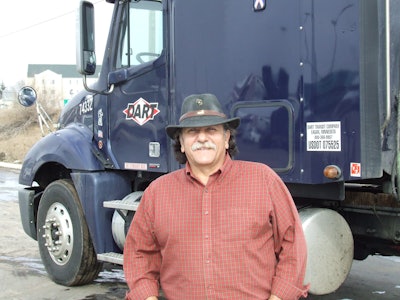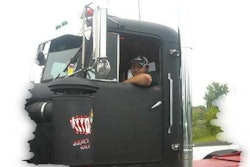
The answer was yes, but “after about a week and a half,” Famularo says, “I told them I’d never go back to paper.”
This, coming from an owner-operator, as you may have noticed reading my May cover story in Overdrive on electronic on-board recorders for hours-of-service compliance, is not exactly common. Many view electronic logs as impositions on operational and business freedom, invasions of the privacy of the cab or worse.
The reasons Famularo and others among the U.S. trucking public think different are multifold, not least among them the ease electronic logs — also known as “electronic onboard recorders,” or EOBRS — lends the process of maximizing hours while running legal. No longer, says Famularo, must he flag a quarter-hour every time he stops for fuel or a quick spot of coffee. “I can pump 100 gallons in four minutes or less. And when you do your post-trip inspection at the end of the day, too, it’s not a full 15-minute block anymore — now I can do it in about 7-8 minutes.”
In the end, Famularo says, it all adds up. “I find myself with almost 3 hours a week more that I can legally drive than I could under a paper system.” He pays a rental fee for use of the logging device that amounts to less than a dollar a day.
Dart Transit currently has “about 500 units” of the PeopleNet eLogs system being used by company independent contractors, representing “about 20 percent of our fleet,” says Gary Volkman, safety vice president. Famularo’s experience, furthermore, Volkman adds, is in no way an outlier among owner-operators employing electronic logs. “We’ve found a pretty high success rate with contractors using an EOBR. There’s a high degree of acceptability and it’s often sort of like, ‘Don’t take it away from me.'”
Hours documentation’s defensibility in court and in an FMCSA audit is a growing concern, too, of large freight carriers across the U.S., Volkman says, and they like EOBRs for that reason. “You don’t have all of the regulatory support documentation issues with EOBRs — whether it’s litigation or whether you’re trying to defend yourself with FMCSA.”
The concern should translate to single-unit fleets as well, as Famularo says. He doesn’t deny that, under the paper system over his long career, he’s seen a fair amount of hours fudging. “But in today’s environment, if you’re out there and you mess up and you’re not where you’re supposed to be,” he asks, “are those extra 120 miles worth going to prison over?”










